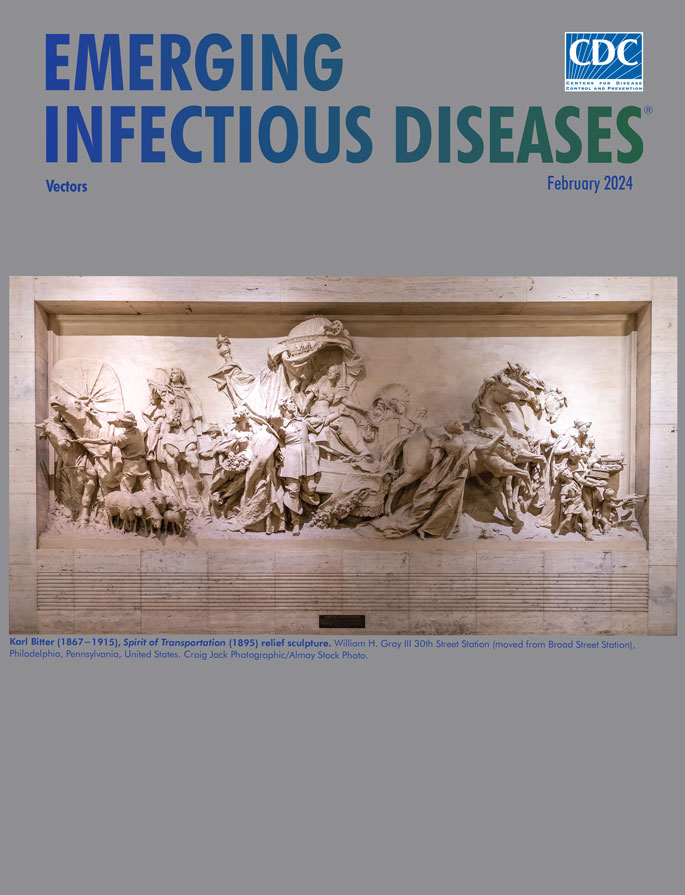Increased Rates of Purpureocillium lilacinum Mold among Laboratory Culture Results, United States
IF 6.6
2区 医学
Q1 IMMUNOLOGY
引用次数: 0
Abstract
Purpureocillium lilacinum, a common environmental mold and bionematicide, can cause human infections. At a major US commercial laboratory during March 2019–February 2025, P. lilacinum culture rates increased; rates were highest in the South Atlantic and Pacific states. Nonculture-based diagnostic tools such as microscopy may help identify and confirm clinical infection earlier.
实验室培养结果中紫紫色纤毛菌霉菌的增加率,美国
紫丁香紫霉是一种常见的环境霉菌和生物杀菌剂,可引起人类感染。2019年3月至2025年2月,在美国一家大型商业实验室,淡紫色假单胞菌培养率上升;南大西洋和太平洋各州的死亡率最高。非培养为基础的诊断工具,如显微镜,可能有助于早期识别和确认临床感染。
本文章由计算机程序翻译,如有差异,请以英文原文为准。
求助全文
约1分钟内获得全文
求助全文
来源期刊

Emerging Infectious Diseases
医学-传染病学
CiteScore
17.30
自引率
1.70%
发文量
505
审稿时长
1 months
期刊介绍:
Emerging Infectious Diseases is a monthly open access journal published by the Centers for Disease Control and Prevention. The primary goal of this peer-reviewed journal is to advance the global recognition of both new and reemerging infectious diseases, while also enhancing our understanding of the underlying factors that contribute to disease emergence, prevention, and elimination.
Targeted towards professionals in the field of infectious diseases and related sciences, the journal encourages diverse contributions from experts in academic research, industry, clinical practice, public health, as well as specialists in economics, social sciences, and other relevant disciplines. By fostering a collaborative approach, Emerging Infectious Diseases aims to facilitate interdisciplinary dialogue and address the multifaceted challenges posed by infectious diseases.
 求助内容:
求助内容: 应助结果提醒方式:
应助结果提醒方式:


